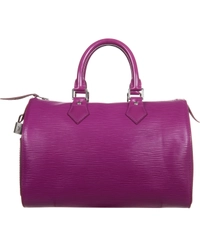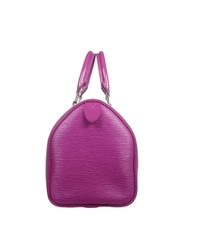Louis Vuitton Speedy 25 in Grenade Epi Leather
Item not present in the shop
For security reasons this item is not present in our shop. We kindly request you to make an appointment one day in advance if you want to view the item.
For security reasons this item is not present in our shop. We kindly request you to make an appointment one day in advance if you want to view the item.
Editor's Note
A compact city bag in durable Grenade Epi leather. The Speedy was one of the first bags released in the 1930's by Louis Vuitton. Think of it as the little sister to the Keepall bag. The Speedy was designed to be an everyday version of the Keepall while still offering plenty of interior space for essentials. Even though the Speedy bag was released in the 1930's, it's arguable that it didn't really become the coveted and timeless bag it is today until Audrey Hepburn was seen with one in the 1960’s. First called the Express and later renamed the Speedy, it was first made available in three sizes: 30, 35 and 40. We can also thank Audrey Hepburn for the Speedy 25 because Louis Vuitton made a custom Speedy in this size after her request. Epi Speedy 25's are larger than Monogram Speedy 25's, measuring at about 28cm length-wise. Discontinued in Epi leather in 2012, this is definitely a classic piece of Louis Vuitton that will never go out of style!
Characteristics
- Reference
- LDVA11249
- designer
- Louis Vuitton,
- status
- Sold
- Dimensions
- 28 x 20 x 15 cm
Louis Vuitton does not endorse the authentication process of La Doyenne Vintage and is not involved in it.
Louis Vuitton is a registered trademark of Louis Vuitton.
La Doyenne Vintage is not affiliated with Louis Vuitton.










